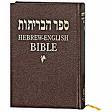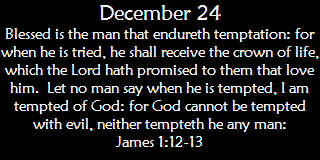Introduction
Christianity has always been the religion of the Book, the Bible. More specifically for this series, all Christians of all denominations cherish the four Biblical or canonical Gospels. But there is no pleasant way to put this. In the past decade – but also several before that – the Gospels have been assaulted by liberal scholars and other critics.
Two Gnostic scholars, Willis Barnstone and Marvin Meyer, strip the historical and narrative (story) aspects in John and turn it into a sayings Gospel (The Gnostic Bible, New Seeds, 2006); in their Gnostic Bible they place John next to the pseudonymous Gospel of Thomas (not written by the Apostle Thomas), a sayings “gospel.” Denying genres (kinds of literature) is common in postmodernism (see a series on Postmodernism and the Bible, below).
Next, the Jesus Seminar was founded by Robert Funk in 1985. It consists of a group of scholars who meet twice a year to debate over the historical Jesus. They conclude that Jesus said only eighteen percent of the words found in the synoptic Gospels (Matthew, Mark, and Luke), and John comes out worse (Five Gospels, Poleridge, 1993, the fifth being the Gospel of Thomas).
So what are the critics attacking? Historical reliability. Before the Gospels were written in their final form – the ones we have now (to simplify things) – how did the earliest Christians transmit the traditions (to be defined in a future article) about Jesus? That is the subject of much of the entire series. It also explains that the Gospels are founded squarely on eyewitnesses – many named – from the very beginning of Jesus’ ministry to the very end and beyond.
It is no longer feasible – if it ever was – for web readers and TV viewers to ignore these criticisms, since they come across the mass media and the web seemingly from one month to the next. Anyone who watches the television sees eager scholars – eager for the spotlight – throw all kinds of doubt onto the Gospels.
Readers and viewers who take Scripture seriously can get confused. Many of them do not know how to research the right books so they can counter the destructive media messages. And when they find the right books, the jargon is technical – the scholars really write for other scholars, only sometimes with an eye on the wider public. Laypersons do not know how to sort out what they are reading, but they hear the negative messages clearly enough. So the series is intended for anyone who has access to the mass media. Ordinary believers, home Bible study leaders, Sunday school and catechism teachers, high school and college students, pastors, and priests may find something of value in the series. But mainly it is written for the laity or nonspecialist, so I use the Question and Answer (Q & A) format, for clarity and ease of understanding. I hope I have boiled down complicated issues into understandable language and vocabulary.
So what is the purpose of the series? One is to bring onto the worldwide web scholarship that counters the critics. I hope libraries are not things of the past, but more ordinary people get their information first from the web than from books. And I do not see enough articles that uphold traditional Gospel scholarship available on the information superhighway.
Suffice it to say here that the earliest Christians passed on the traditions reliably and accurately, according to the historical standards of their time. In fact, they did the same deeds that Jesus taught them to do – an often overlooked fact in the study of the transmission process from his ministry to their writings about him (see the series on miracles, below). Historical reliability is the thesis I endeavor to demonstrate in the series. If readers would like to investigate the opposite thesis, then they can find plenty of other articles and media claims elsewhere.
In addition to transferring onto the web the counterbalancing scholarship in a way that is understandable to web readers, I also provide a “References and Further Reading” section at the end of each article. Web readers who are also book readers will then know where to look first.
Other purposes of the series go directly to the content of the articles. Since the future articles are put in a Q & A format, it is used here. The articles seek to answer these questions and more:
- Do the four Gospels have any support from archaeology?
- Did Jesus even exist?
- Does John share any or many similarities with the other three?
- Do they cohere together in a unified storyline?
- Is the Gospel of John so far different from the Gospels of Matthew, Mark, and Luke that John has little or no historical value?
- Are there contradictions among the Gospels?
- How do theology and history interact in the four Gospels?
- Can we trust them if they have a strong point of view and seek to persuade their readers or listeners?
- What is the so-called Q “gospel”?
- If it existed, what is its theology?
- Are the Gospels based on eyewitness testimony?
- If so, aren’t eyewitnesses notoriously unreliable?
- How is eyewitness testimony disclosed, if it is, in the four Gospels?
- Are the eyewitnesses whose traditions that feed into the written Gospels anonymous or named?
- What is the role of the Twelve in securing the traditions about Jesus?
- What is a tradition?
- Were the traditions passed on orally or literarily (in writing)?
- Are there cultural analogies that show how they were transmitted?
- Most importantly, are the four Gospels historically reliable?
- Can we trust them, historically speaking, in addition to their theology?
One minor purpose of the series is to keep one eye on how the historical reliability of the four Gospels compares with the Gnostic texts. So a review of Gnosticism is in order.
The word gnosticism comes from an ancient Greek word for knowledge. A Gnostic is “someone who knows” or a “knower.” But what does he or she know? She or he knows secret teachings that lift him or her above the mundane and the all-too-human (to use a phrase anachronistically). In the Mediterranean world many decades after Jesus lived and the church grew rapidly and the four canonical Gospels were written down, who was more qualified than Jesus himself to be the Ultimate Gnostic? (Canon means “measuring stick” or the “standard” by which we evaluate other writings; in our case it consists of the books in the New Testament.)
So what are the basics of Gnostic teaching? Jesus came to reveal hidden truths and secret knowledge. He discloses a way of escape from the world and the human body, if only a few special people would come to know this.
The Gnostic authors often borrowed the names of Jesus’ disciples to attach to their texts, such as the Gospel of Peter, the Gospel of Thomas, the Gospel of Philip, and the Gospel of Mary. The Gospel of Judas has been discovered, restored, and published most recently. Using the disciples’ names or other Biblical names gives the appearance of authority, but it is deceptive. The original disciples or Bible characters had nothing to do with these writings. The teaching of Jesus, the names of his disciples, and the four Gospels traveled well. Gnostics capitalized on this fame.
All of these (late) Gnostic documents would not be a concern to anyone but a few specialists. Yet some scholars, who have access to the national media and who write their books for the general public, imply that Gnostic texts should be accepted as equally valid and authoritative as the four canonical Gospels, or stand a step or two behind the Biblical Gospels. At least the Gnostic scriptures, so these scholars say today, could have potentially been elevated to the canon, but were instead suppressed by orthodox church leaders. (Orthodox literally means “correct or straight thinking,” and here it means the early church of Irenaeus and Athanasius, to cite only these examples).
This series challenges the claim that the Gnostic texts should be canonical or even a step or two behind the four Biblical Gospels. The Gnostic texts were considered heretical for good reason.
This series has two other features. Each article ends with these questions: What is the bottom line for the historical reliability of the Gospels? And what does all of this mean to the Church of all denominations? Those questions and answers serve as a conclusion and an application.
The series is not about establishing the inerrancy or infallibility or inspiration of the Gospels. I leave those doctrines to theologians. Instead, the goal is to establish the historical reliability of the Gospels. If we cannot establish that, then how can we even begin to discuss their inerrancy, infallibility, and inspiration, as those terms have been traditionally understood and defined?
I learned a lot while writing the series, which was much more difficult than I had thought. But, as noted, I hope that I will make complicated issues and scholarship understandable to nonspecialists, so they no longer have to feel under siege.
Knowledge and information are the best antidote to confusion.









No comments:
Post a Comment